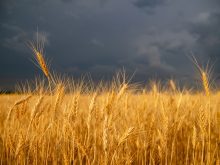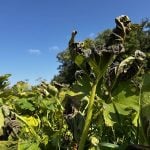Big picture farm financial analysis is useful for many purposes, but farmers have their eyes fixed on other indicators as they plan for the growing season ahead.
Farm Credit Canada recently released big picture analysis projecting grain producers across the country will spend more than ever to plant their crops this spring, making it the most expensive crop ever planted. Meanwhile, the federal lender is also forecasting an increase in farm cash receipts for 2023. On the crops side of receipts, the forecast includes assumptions for both grain volume and price.
Read Also

Canola or cars? Canada can’t save both
Canola is a winning industry. It feeds the economy, supports thousands of families and helps keep our rural communities alive.
A lot of work goes into the projections, but they have limited value for farmers making decisions ahead of seeding outfits hitting the field. Here are some factors that farmers are monitoring.
First, many grain prices have been slipping and it isn’t just old crop prices. In many cases, it’s new crop prices as well. Whether you lock in any new crop prices, contract values are an indicator to watch.
Prices are still pretty shiny compared to a few years ago, but new crop values are typically a few steps below old crop. Published reports put old crop yellow peas at around $12 a bushel, with new crop around $10.50. Old crop red lentils are 30 cents a pound or a bit better, with new crop two or three cents lower. Old crop durum is around $12 a bu. with new crop up to a dollar lower.
The darling of new crop pricing was mustard. New crop bids were released last fall and quickly escalated as buyers tried to encourage acres. As contracts began filling, prices started dropping. From a high of more than 90 cents a pound, new crop mustard contracts are now in the 60s.
Another pricing signal farmers will be watching, particularly in areas still under a drought risk, is crop insurance. Manitoba farmers saw their crop insurance grain price values some time ago. Saskatchewan and Alberta numbers are based on a slightly later time frame and haven’t been released yet.
Since canola values have slipped in recent months, expect the insured price for canola to look pretty good compared to market values. Manitoba’s crop insurance canola price is $19.62 a bu. If the value is similar for Saskatchewan and Alberta, it could encourage more canola in the dry regions.
Saskatchewan Crop Insurance Corp. is also moving to a new system of determining premiums whereby a producer’s individual claim history on each crop will factor into the premium charged. Producers are eager to get their information to see just how this change affects their costs.
Sticking with the cost side of the equation, the elephant in the room is fertilizer prices. Some producers purchased urea at $1,100 a tonne, worried that it was going to go even higher. Since then, prices have softened by hundreds of dollars. Will the price continue to drop? Will the price reverse and go the other direction at some point before seeding?
High fertilizer prices should encourage more adoption of variable rate application. However, I’ve talked to producers who have given up on variable rates due to all the complications it can cause during seeding when time is of the essence.
How much fertilizer do growers still need to purchase? Will the dropping price encourage higher rates of application? The only thing certain is that some producers paid a lot more than others and that will have effects on their bottom lines.
Kevin Hursh is an agricultural journalist, consultant and farmer. He can be reached by e-mail at kevin@hursh.ca.
















